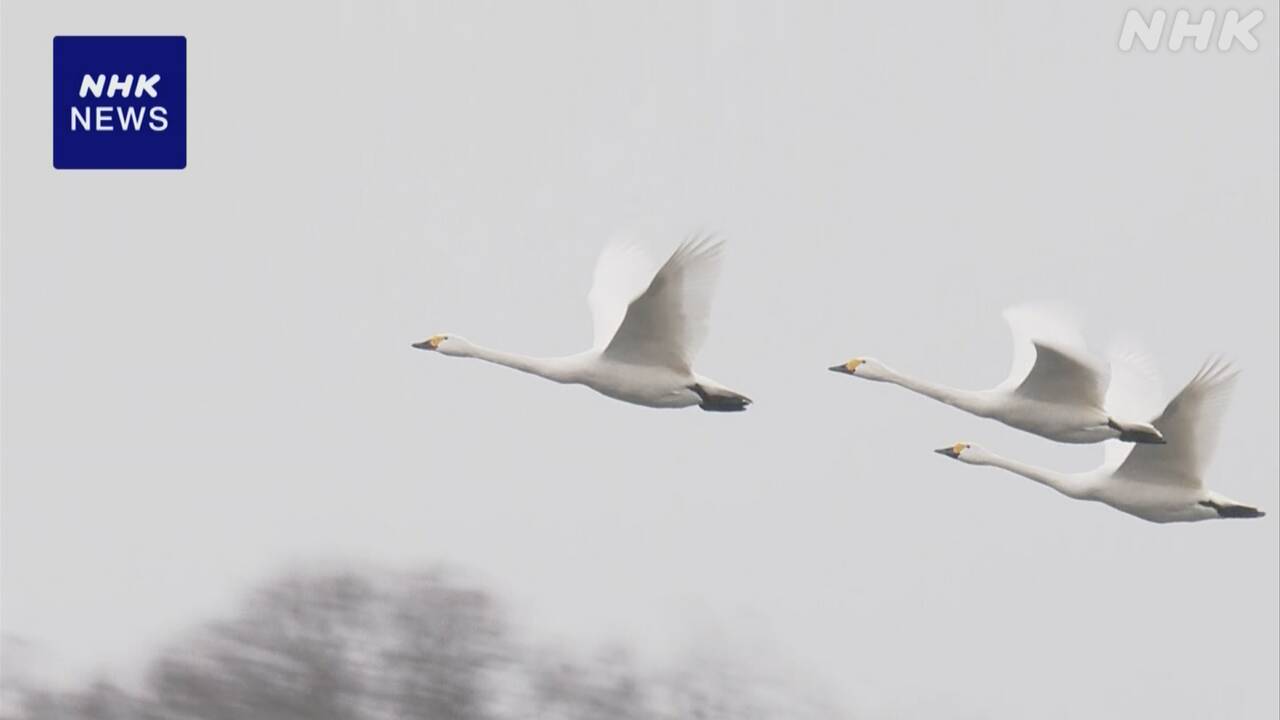In the Shonai region of Yamagata Prefecture, which is known as a breeding ground for swans, the ``northern migration'' of swans after winter begins about three weeks earlier than usual, and they fly off to their breeding grounds such as Russia.
Experts say that the reason for this is that there was little snowfall this winter, which made it easier to find food and eat plenty of food.
This winter, more than 5,000 swans flew to Daisen Kamiike and Shimoike in Tsuruoka City.
This year, the swans are heading back to their breeding grounds in the Russian Far East, and as the snow-laden wind blows on the morning of the 27th, the swans huddle together and spread their wings in preparation for flight. It was a.
Then, around 7 a.m., they formed a flock and took off.
According to Bun Tsunoda, a former director of the Japan Swan Society, the ``Northern Return'' began to be seen this year around February 10, about three weeks earlier than usual.
Mr. Tsunoda believes that the lack of snowfall this winter made it easier to find food and eat plenty of food, and that from the beginning of February, the rice paddies became dry and hard, making it difficult to eat food in the soil. I am giving you.
The ``northern migration'' of swans in the Shonai region is expected to continue until around the beginning of March.

